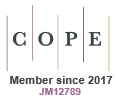The dasyurid dentition and its relationships to that of didelphids, thylacinids, borhyaenids (Marsupicarnivora) and peramelids (Peramelina : Marsupialia)
M Archer
Australian Journal of Zoology Supplementary Series
24(39) 1 - 34
Published: 1976
Abstract
Trends in dasyurid dentition are documented and discussed. Character complexes which vary together rather than independently are the rule. Dasyurids are a unified group with most of the extreme specializations linked through intermediates to more generalized forms. Many genera demonstrate independent development of analogous structures or losses. Dental characters alone do not identify subfamilies.The structurally ancestral condition is generally regarded as that of Cretaceous didelphids such as Alphadon. Modern didelphids examined show considerably less character variation than modern dasyurids. Only incisor number and possibly dP4 cusp number consistently separate didelphids from dasyurids, but some dasyurids have characters not present in any didelphid. With the exception of Paleocene forms, most Tertiary didelphids from South America are too poorly illustrated to allow comparison with other didelphids and dasyurids.
Borhyaenids are regarded as derivatives of didelphids. In terms of dental morphology, thylacinids closely resemble borhyaenids. It is probable that both had a common ancestor with teeth like thylacinids and a basicranium like didelphids. Ancestral Miocene thylacinids resemble borhyaenids more closely than does the modern Thylacinus cynocephalus.
https://doi.org/10.1071/AJZS039
© CSIRO 1976


